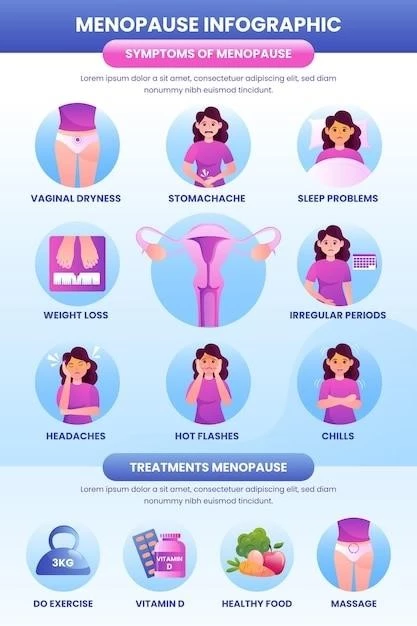Article Plan⁚ Disease, Pelvic Inflammatory Disease
Introduction to Pelvic Inflammatory Disease (PID)
Pelvic inflammatory disease (PID) is an inflammation of the upper genital tract in women‚ affecting the uterus‚ fallopian tubes‚ and ovaries․ It is commonly caused by sexually transmitted infections‚ leading to ascending infections from the lower genital tract․ Learn about the diagnosis‚ treatment‚ and prevention strategies for PID‚ which can present as acute‚ chronic‚ or subclinical‚ impacting fertility and posing risks of complications like infertility and ectopic pregnancy․
Early diagnosis and treatment of PID are crucial to prevent long-term sequelae․ Antibiotics play a key role in curing the infection‚ but they cannot reverse scarring caused by PID․ Prompt medical attention is vital if you experience symptoms such as pelvic pain․ Regular screenings for sexually transmitted infections are essential‚ and timely antibiotic therapy can help prevent severe damage․
Causes of Pelvic Inflammatory Disease
Pelvic inflammatory disease (PID) is primarily caused by bacterial infections that originate in the lower genital tract and ascend to the upper genital tract‚ affecting the uterus‚ fallopian tubes‚ and ovaries․ The most common bacteria responsible for PID are sexually transmitted‚ such as Chlamydia trachomatis and Neisseria gonorrhoeae․ These infections can lead to inflammation and scarring‚ impacting fertility and increasing the risk of complications like ectopic pregnancy․
Untreated sexually transmitted infections increase the likelihood of developing PID․ Factors like multiple sexual partners‚ unprotected sex‚ and a history of PID also contribute to the risk of acquiring this condition․ It is essential to practice safe sex‚ undergo regular screenings for sexually transmitted infections‚ and seek prompt treatment for any suspected infections to prevent the development of PID․
Understanding the causes of PID is crucial in preventing its occurrence and minimizing the associated risks․ By addressing risk factors and promoting protective sexual practices‚ individuals can reduce their chances of developing PID and protect their reproductive health․
Symptoms of Pelvic Inflammatory Disease
Pelvic inflammatory disease (PID) can present with various symptoms‚ although in some cases‚ individuals may experience no noticeable signs․ Common symptoms include lower abdominal pain‚ unusual vaginal discharge‚ painful urination‚ irregular menstrual bleeding‚ fever‚ and pain during intercourse․ It is essential to seek medical attention promptly if you experience any of these symptoms to prevent complications and long-term damage․
Understanding the symptoms of PID can help individuals recognize the need for medical evaluation and treatment․ If you suspect you may have PID or have a history of sexually transmitted infections‚ it is crucial to consult a healthcare provider for proper diagnosis and management․ Early detection and management of PID can prevent serious consequences and safeguard reproductive health․
Diagnosis of Pelvic Inflammatory Disease
The diagnosis of pelvic inflammatory disease (PID) primarily relies on a combination of symptoms‚ physical examination findings‚ and laboratory tests․ Healthcare providers may consider symptoms such as lower abdominal pain‚ abnormal vaginal discharge‚ fever‚ and painful urination‚ along with physical exam findings like pelvic tenderness or cervical motion tenderness․
Laboratory tests‚ including urine tests‚ vaginal swabs for culture or polymerase chain reaction (PCR) analysis‚ and blood tests‚ can help confirm the presence of bacterial infections associated with PID; Imaging studies like ultrasounds or pelvic exams may be utilized to evaluate the pelvic organs for signs of inflammation or infection․
Early and accurate diagnosis of PID is crucial to prevent complications and minimize long-term consequences․ If you suspect you have PID or experience symptoms suggestive of the condition‚ it is essential to seek medical attention promptly for proper evaluation and management․
Treatment Options for Pelvic Inflammatory Disease

Treatment for pelvic inflammatory disease (PID) typically involves antibiotics to eliminate the bacterial infection causing the inflammation․ The specific antibiotics prescribed may vary depending on the severity of the condition and the suspected pathogens involved․ It is essential to complete the full course of antibiotics as directed by your healthcare provider to ensure the infection is fully eradicated․
In addition to antibiotics‚ rest‚ hydration‚ and pain management measures may be recommended to alleviate symptoms and support the healing process․ Follow-up appointments with your healthcare provider are crucial to monitor your response to treatment and assess for any complications․ If you experience persistent or worsening symptoms during or after treatment‚ seek medical attention promptly․
Antibiotics for Treating Pelvic Inflammatory Disease

Several types of antibiotics can effectively treat pelvic inflammatory disease (PID) caused by bacterial infections․ Antibiotic treatment aims to eliminate the infectious agents responsible for PID and prevent further complications․ It is vital to complete the full course of antibiotics as prescribed by your healthcare provider to ensure successful eradication of the infection and reduce the risk of recurrent PID․
While antibiotics are crucial for treating PID‚ they may not reverse any scarring or damage caused by the infection․ Therefore‚ seeking medical attention promptly if you experience symptoms such as pelvic pain is essential to prevent severe complications․ Timely antibiotic therapy plays a key role in managing PID and protecting reproductive health․
Prevention of Pelvic Inflammatory Disease
Preventing pelvic inflammatory disease (PID) is crucial for safeguarding reproductive health․ Practicing safe sex by using condoms can significantly reduce the risk of acquiring sexually transmitted infections that can lead to PID․ Undergoing regular screenings for sexually transmitted infections and promptly seeking treatment for any identified infections can prevent the development of PID․
Additionally‚ maintaining good hygiene practices‚ such as proper genital care and regular gynecological check-ups‚ can contribute to early detection and management of potential infections that may lead to PID․ Being aware of the symptoms of sexually transmitted infections and PID and seeking medical attention promptly if symptoms arise are key components of preventive care․
Complications Associated with Pelvic Inflammatory Disease
Pelvic inflammatory disease (PID) can lead to various complications if left untreated or inadequately managed․ Complications may include chronic pelvic pain‚ tubal factor infertility due to tubal scarring or blockage‚ ectopic pregnancy‚ and an increased risk of recurrent PID episodes․ Additionally‚ PID can cause long-term damage to reproductive organs‚ impacting fertility and overall reproductive health․
Timely diagnosis‚ appropriate antibiotic therapy‚ and follow-up care are essential to prevent complications associated with PID․ Seeking medical attention at the earliest sign of symptoms can help mitigate the risk of long-term sequelae and improve outcomes․ It is crucial to prioritize reproductive health and address PID promptly to reduce the potential for complications․
Chronic and Subclinical Forms of Pelvic Inflammatory Disease
Pelvic inflammatory disease (PID) can manifest in chronic and subclinical forms‚ presenting challenges in both diagnosis and management․ Chronic PID involves persistent inflammation of the upper genital tract and may result in long-term complications such as chronic pelvic pain and infertility․ Subclinical PID‚ characterized by mild or asymptomatic inflammation‚ can still impact reproductive health and requires careful monitoring and treatment․
Understanding the varied presentations of PID‚ including chronic and subclinical forms‚ is essential for healthcare providers to deliver appropriate care․ Early detection‚ comprehensive evaluation‚ and tailored treatment regimens are crucial in addressing chronic and subclinical PID to prevent complications and improve outcomes for individuals affected by these forms of the disease․
Impact of Pelvic Inflammatory Disease on Fertility
Pelvic inflammatory disease (PID) can significantly impact fertility by causing scarring or damage to the reproductive organs‚ particularly the fallopian tubes․ This scarring may result in blocked or damaged fallopian tubes‚ making it challenging for sperm to reach and fertilize an egg or for a fertilized egg to reach the uterus for implantation․ Additionally‚ PID may increase the risk of ectopic pregnancy‚ a serious condition that can jeopardize fertility and health․
Early diagnosis and prompt treatment of PID are crucial to minimize the risk of fertility complications․ Antimicrobial therapy for PID aims to eliminate the infection and reduce inflammation to prevent lasting damage to the reproductive system․ If you suspect you have PID or experience symptoms associated with the condition‚ consult a healthcare provider for evaluation‚ diagnosis‚ and appropriate management to protect your fertility․
Risk Factors for Developing Pelvic Inflammatory Disease
Several risk factors increase the likelihood of developing pelvic inflammatory disease (PID)‚ including young age‚ multiple sexual partners‚ unprotected sex‚ a history of sexually transmitted infections‚ and douching․ Women with a previous episode of PID are also at higher risk for recurrence․ Additionally‚ engaging in sexual activities that introduce bacteria into the reproductive tract can heighten susceptibility to PID․
Understanding these risk factors is essential for implementing preventive measures and seeking timely medical care if needed․ Practicing safe sex‚ undergoing regular screenings for sexually transmitted infections‚ and avoiding behaviors that can increase the risk of infection are key strategies in reducing the likelihood of developing PID․ It is important to prioritize reproductive health and take proactive steps to minimize the risk of PID․
Management Strategies for Pelvic Inflammatory Disease Patients
Effective management of pelvic inflammatory disease (PID) involves a multifaceted approach aimed at resolving the infection‚ alleviating symptoms‚ and preventing complications․ Treatment commonly includes antibiotic therapy to eradicate the causative bacteria․ Compliance with the full course of antibiotics is essential to ensure complete resolution of the infection․
Alongside antibiotic treatment‚ symptomatic relief measures such as pain management and rest can enhance patient comfort during recovery․ Follow-up appointments are crucial to monitor response to treatment‚ address any persistent symptoms‚ and assess for potential complications․ In cases of severe PID‚ hospitalization and intravenous antibiotics may be necessary to manage the infection more aggressively․
Research and Advances in the Understanding of Pelvic Inflammatory Disease
Research and advances in the understanding of pelvic inflammatory disease (PID) focus on identifying etiological factors‚ improving diagnostic approaches‚ and developing more effective treatment strategies․ Studies aim to enhance the early detection of PID through advanced screening methods and molecular diagnostics targeting the causative agents of the disease․
Ongoing investigations explore the pathogenesis of PID‚ including the microbiological interactions involved in upper genital tract infections․ Emerging research delves into the role of the vaginal microbiome in PID pathogenesis and seeks to elucidate the complex interplay between bacterial species and host factors contributing to PID development․
Clinical guidelines‚ collaborative efforts among healthcare providers‚ and interdisciplinary approaches are integral in optimizing care coordination and outcomes for patients with PID․ Recent research underscores the importance of timely and comprehensive management of PID to mitigate complications‚ improve patient outcomes‚ and enhance public health initiatives surrounding the prevention and treatment of this prevalent reproductive health concern․
